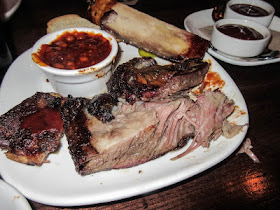Our next destination was the Herbert Hoover Presidential Library and Museum (the second PLM of our trip) in West Branch, just 12 miles east of Iowa City.
I have to admit that I've always viewed Hoover as somewhat of a place-holder in history. He got stuck with the Great Depression, not really his fault, and he mostly just had to be the figurehead in the White House until someone else could replace him.
I got a completely different view of him from visiting his PLM.
Hoover's father died in 1880 and his mother in 1884, leaving him an orphan at age nine. He eventually went to live with an uncle in Oregon. After initially failing his college entrance exams, he was accepted into the inaugural class of Stanford University in Palo Alto, California, from which he graduated in 1895 with a degree in geology and a girlfriend named Lou Henry, a banker's daughter and fellow Iowan.
 |
| Herbert on the bottom left |


















































